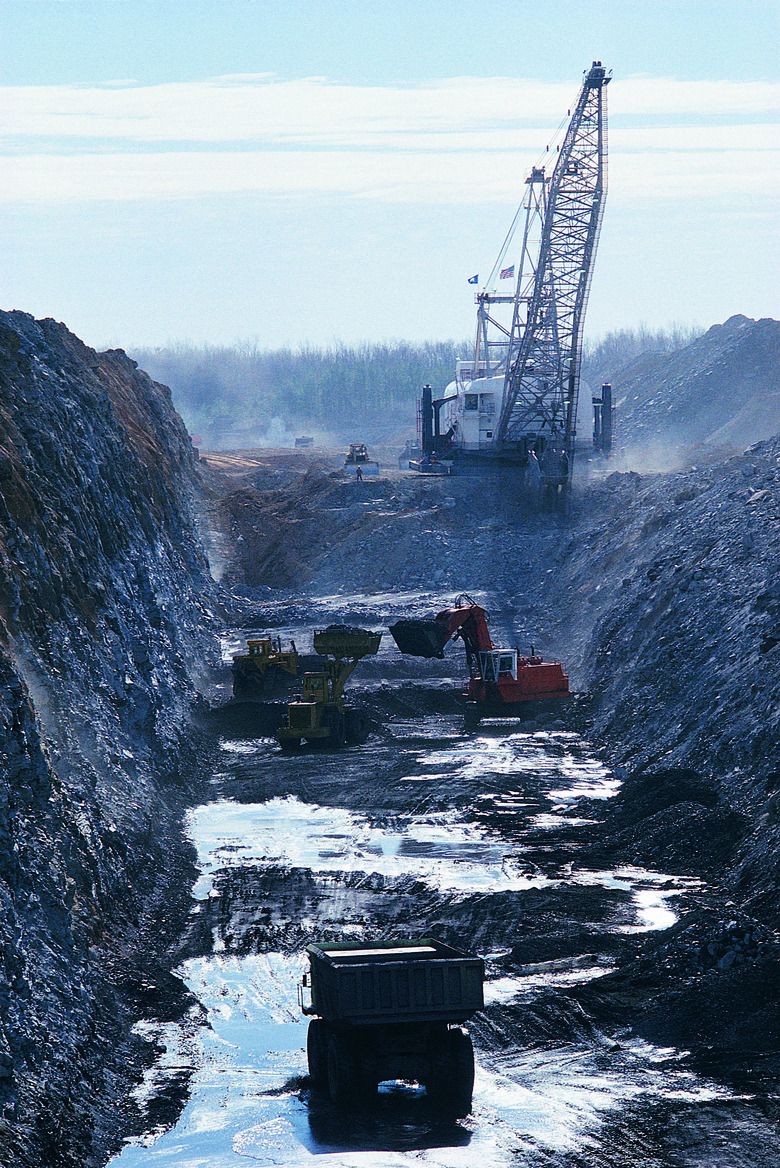Which Of Man's Activities Speeds Up Erosion?
Wind, water and glaciers all wear down soil and rock and carry it to other sites. The process of erosion makes a tremendous, costly impact around the world. Each year, estimated damage due to erosion reaches $400 billion worldwide. Some of this is due to natural causes, but a great deal of erosion comes from human activities such as agriculture, mining and construction.
The Effects
The Effects
Whether it is natural or man-made, erosion leads to a number of problems. Over 99 percent of the world's food is raised on farms, but the planet is losing about 96,000 square kilometers (about 37,000 square miles) of cropland annually. It takes 20 years for just 2.5 acres to be replaced. Erosion also leads to sediment dumping in waterways. This harms habitats, killing organisms dependent upon streams and rivers. In addition, when land is worn down, it cannot control water flow well, so flooding is more likely.
Cultivation Challenge
Cultivation Challenge
Farmland is being reduced because of erosion, but agriculture practices are, ironically, responsible for removing about 75 billion tons of topsoil around the world annually. The American share of that is almost 7 billion tons. Farming exposes topsoil to wind and rain when vegetation is cleared for new acreage, as well as when plows work the field, loosening the soil.
Going Deep
Going Deep
Mining activities remove trees, plants and topsoil from an area. Unprotected, the earth is open to the elements, and wind and rain erode the land. Strip mining is especially harmful because it moves large chunks of land to reach the coal beneath. Developers sometimes blast sections of mountains, exposing even more vulnerable earth.
The Problem Builds
The Problem Builds
If appropriate steps are not taken, construction practices cause erosion. Soil is exposed when areas are cleared for building, and storm water runoff carries sediment to lakes, rivers and streams. In many parts of the United States, regulations require construction areas larger than 5 acres to have erosion-control plans, such as silt fences and straw bales to reduce runoff.
Getting Hotter
Getting Hotter
Humans contribute to global warming, and global warming contributes to erosion. The burning of coal, oil and gas is responsible for most of the climate change. Storms are increasing in frequency and severity, washing away soil. This is especially apparent in coastal areas, where hurricanes and typhoons wear away coastlines and destroy habitats.
References
- National Geographic Education: Erosion
- Cornell University: Cornell Chronicle: 'Slow, Insidious' Soil Erosion Threatens Human Health and Welfare as Well as the Environment, Cornell Study Asserts
- NBC News: Humans Said Have Huge Impact on Erosion
- World Wildlife Fund: Soil Erosion and Degradation
- University of California, Davis: Division of Agriculture and Natural Resources: Understanding Soil Erosion in Irrigated Agriculture
- World Wildlife Fund: Farming: Soil Erosion and Degradation
- Greenpeace: Mining Impacts
- U.S. Coast Guard: Soil Erosion from Two Small Construction Sites, Dane County, Wisconsin
- National Wildlife Federation: Global Warming Is Human Caused
Cite This Article
MLA
Sherwood, Susan. "Which Of Man's Activities Speeds Up Erosion?" sciencing.com, https://www.sciencing.com/mans-activities-speeds-up-erosion-18415/. 24 April 2017.
APA
Sherwood, Susan. (2017, April 24). Which Of Man's Activities Speeds Up Erosion?. sciencing.com. Retrieved from https://www.sciencing.com/mans-activities-speeds-up-erosion-18415/
Chicago
Sherwood, Susan. Which Of Man's Activities Speeds Up Erosion? last modified March 24, 2022. https://www.sciencing.com/mans-activities-speeds-up-erosion-18415/
